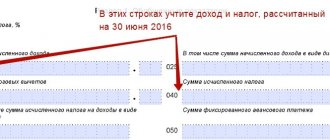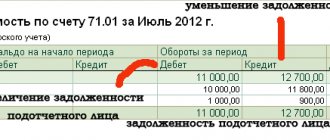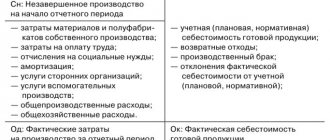Source number 1 - MDS 81.35-2004
When determining the cost of equipment, furniture and inventory as part of estimates and estimates, MDS 81.35-2004 gives us only recommendations for dividing equipment by purpose: for production needs, for industrial buildings, for public and administrative buildings.
There is a list of costs that must be included in the cost of equipment:
acquisition of technological equipment, tools and production equipment for the initial equipment of industrial buildings and structures (if the above is not included in the equipment supply);
supervision of installation, carried out by representatives of equipment manufacturers or, on their behalf, by specialized organizations licensed to perform supervision of installation of equipment, monitoring compliance with requirements and special conditions during installation work;
on-site finishing of large metallurgical, coal, mining and other equipment, carried out in the technological chain together with other equipment or due to the economic impracticality of constructing expensive and rarely reused stands and testing stations at manufacturing plants;
additional production (rework and larger assembly) under construction conditions of equipment, usually large and heavy, shipped to the construction site by the manufacturer in the form of individual components and parts (with the exception of additional production carried out as part of installation work);
pre-installation inspection of equipment due to violation of the warranty period or the conditions of its storage at the customer’s warehouse, organized and paid for by the customer from the reserve of funds for unforeseen work and costs;
design of equipment individually manufactured according to special technical conditions, for which there are no standards and industry norms;
production of special equipment in an individual design, necessary for the installation of large-sized, heavy or technically complex equipment during the execution of work.
35 MDS does not provide an exact definition of what is considered equipment, although Appendix No. 5 contains a list of what MAY relate to equipment. But the entire list of equipment used in construction is much wider.
Source No. 2 - MDS 81.37-2004
Before the cancellation of MDS 81.37-2004 “GUIDELINES FOR THE APPLICATION OF FEDERAL UNIT PRICES FOR INSTALLATION OF EQUIPMENT” (CANCELED from July 1, 2017. Order of the Ministry of Construction of Russia dated June 30, 2021 No. 946/pr), the separation of materials and equipment was regulated by:
clause 2.7.3
Estimated prices for materials accepted according to the Federal Collection of Estimated Prices for Materials, Products and Structures have a seven-digit code .
If there are no material resources specified by the project in the nomenclature of the Federal Collection, their cost should be determined on the basis of calculations, taking into account documented costs for containers, packaging, transportation and procurement and storage costs, markups of supply, marketing and intermediary companies.
and 2.7.5
Materials and products for industrial and technical purposes that are not included in unit prices and are not included in the lists of unaccounted materials as part of technical parts , introductory instructions or appendices to FERM collections should be classified as equipment .
After the cancellation of this MDS, these items were not included in the current Methodological Recommendations on the application of federal unit prices for construction, special construction, repair and construction, installation of equipment and commissioning works (pr. 81/pr dated February 9, 2021).
What is a battery
A battery is an autonomous source of electricity that accumulates, stores and releases energy. The battery is an important element of the electrical equipment of a vehicle. The purpose of the battery is determined to start the engine and ensure the supply of electricity to the on-board network. All electrical appliances, when the engine is turned off and the generator is not running, operate on battery power. The storage device helps in traffic jams when there is not enough generator energy.
Source No. 3 - MDS 12-15.2003
MDS 12-15.2003 METHODOLOGICAL INSTRUCTIONS for drawing up a segregation sheet for customer supplies.
Intended for use by OJSC Gazprom (the document is valid, although there is MDS 82-1.2005 - the same recommendations with a targeted nature). The pricing reform has taught the estimator to be prepared for anything and it is difficult to surprise an experienced estimator, but still, I will leave the possibility that the criteria below for assigning the type of cost of a resource to equipment or material for Gazprom may differ from those used for the rest of the construction industry. Here is an excerpt from the document:
2 CRITERIA FOR ASSIGNING COMMODITY AND MATERIAL VALUABLES (TMV) TO MATERIALS OR EQUIPMENT
2.1 Materials should include production inventories, which are a set of natural material elements of production used as objects of labor in the production and non-production spheres of activity of a construction enterprise. They are entirely consumed in each production cycle and fully transfer their cost to the cost of construction and installation work performed ...
2.2 Equipment used directly during construction and installation work and creating conditions for their implementation should include fixed assets, which are a set of tangible objects and values operating in an unchanged form over a long period of time .
These definitions appear in student courses on economic theory, which is not a bad thing: you will communicate with the accounting department in the same language. I recommend keeping this document for yourself - it is valid, and despite its targeted nature, it can serve as one of the arguments when dividing material resources into equipment and materials.
Main technical characteristics of batteries
Nominal battery capacity
The rated capacity of the element - the ability to accumulate and supply DC electricity, determines the battery life of the UPS. The capacity of an electric battery shows the power supply time of the load connected to it.
Important! Capacity does not fully characterize the energy of the battery, i.e. energy that can be stored in a fully charged battery. The higher the battery voltage, the greater the energy stored in it.
The capacity is always indicated on the battery case, as well as on the packaging, because it is by this criterion that most users choose the right model.
Starting current
The value characterizing the parameter of the current flowing in the car starter at the moment of starting the power unit is considered to be the starting current. The starting current or starter current occurs at the moment when the key is turned in the ignition switch and the starter begins to turn. The unit of measurement is Ampere. Cold cranking current is an indicator of how the battery will behave in frosty weather and will be able to start the engine at sub-zero temperatures. It is determined by the current power that the battery can produce during the first 30 seconds at a temperature of -18°C. With high starting current values, the chances of starting the car at sub-zero temperatures increase.
Polarity
The order in which the connecting terminals, which are current-carrying connecting elements, are located on the battery cover is called polarity. There are only two poles - positive and negative, the location options are forward and reverse.
Direct polarity is a domestic development. To identify it, you need to turn the battery so that the label is in front of your eyes. When the positive terminal is located on the left and the negative terminal on the right, it can be argued that the battery has straight polarity. Foreign cars are equipped with reverse polarity batteries.
Forward, reverse polarity
Housing version
The case of most batteries consists of impact-resistant polypropylene, which is characterized as a lightweight material that does not react chemically with the aggressive electrolyte of the battery. Polypropylene is quite resistant to temperature changes that occur under the hood of a car; heating can reach up to +60 °C, and in cold weather up to -30 °C. The case of most batteries consists of a carrying handle, plugs, a charge indicator, and terminals for connecting to the mains. The weight of a 55Ah battery is about 16.5 kg. Traditionally, American, European, Asian and Russian types of cases have appeared.
European and American cases have identical dimensions. For example, 60 Ah batteries have a total height of 17.5 to 19 centimeters. For Asians, this figure is slightly higher, up to 22 centimeters due to the upper location of the electrodes. That is why it is important to correctly analyze the capabilities of the seat under the hood in order to securely secure the battery with a clamping bar and avoid short circuits when the down conductors accidentally touch metal parts of the body.
Source No. 4 - Order of the Ministry of Construction of the Russian Federation No. 78/pr dated February 8, 2018.
Despite the fact that the order is called “On approval of Methodological Recommendations for the development of state elemental estimate standards for installation of equipment and commissioning work,” it contains Appendix 6 “LIST OF MATERIALS AND PRODUCTS NOT SUBJECT TO INCLUSION IN ELEMENTAL ESTIMATE STANDARDS FOR INSTALLATION AND ACCOUNTED AS EQUIPMENT".
There are 62 items on this list, some of which I personally have questions about:
23-26. Oils for oil pumping stations, transformers, turbines - I agree that when installing equipment, oil is an integral part and comes complete with the equipment, but here it should be noted that at the moment the Ministry of Construction of the Russian Federation is moving towards the fact that someday there will be only one in Russia normative base. At the moment, there is an industry-wide base for equipment repairs, being developed by the Ministry of Energy, I think someday it will be harmonized (merged) (as they are doing now with OERrr) with the FSNB/GSN-2017, and then the question will arise - prices for preventive repairs are provided there, including oil changes - will it need to be regarded as equipment or material? Personally, I would classify this as consumables necessary for the operation of the equipment. We recommend watching the video on our YouTube channel about the process of harmonization of TSN-2001 and FSNB-2001.
26-28. Materials loaded into chemical production equipment, Filtering materials for chemical water treatment equipment, Material resources for filling steam turbine and gas turbine units - the name indicates that these are materials. I can't even imagine mercury being EQUIPMENT. Although there was something similar in the movie Terminator 2











